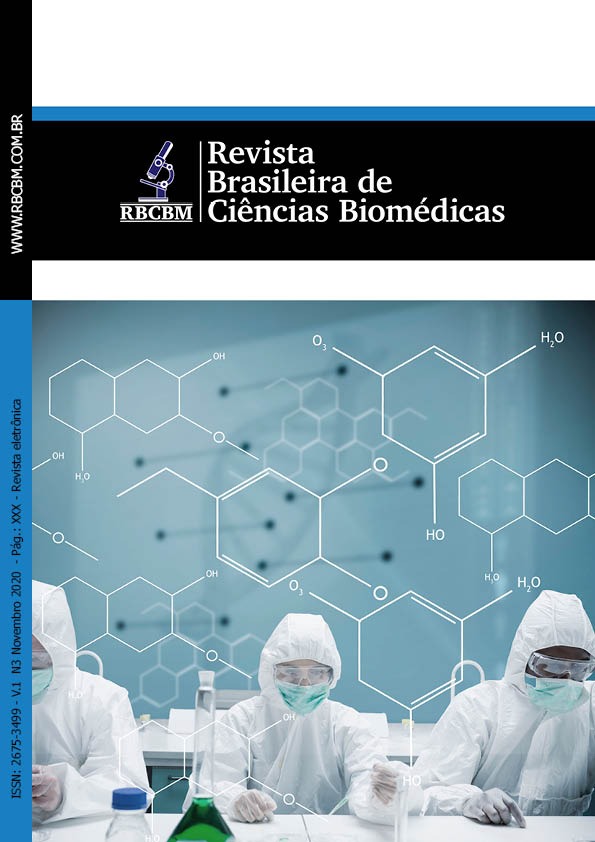Adesão ao tratamento com antineoplásicos orais em pacientes com câncer de mama
Conteúdo do artigo principal
Resumo
Objetivos: avaliar fatores associados à adesão ao tratamento com fármacos de ação antineoplásica por via oral em pacientes com câncer de mama. Métodos: foi realizado levantamento bibliográfico do período de 2002 a 2018 nas bases de dados Scielo, Pubmed e Lilacs. Foram selecionados 50, após leitura dos resumos, foram selecionados 30 estudos para leitura completa. Com isso, foram excluídos os que se referem ao acompanhamento farmacoterapêutico de outras doenças não compatíveis com o tema. Dos estudos avaliados, 22 abordavam o tema do estudo e foram utilizados como referência. Conclusão: a adesão ao tratamento com antineoplásicos orais para o tratamento de câncer de mama ainda é um desafio para saúde pública e, em especial para os farmacêuticos que atuam na dispensação dos referidos medicamentos. Com o estudo, foi possível observar que existem múltiplas variáveis que interferem na adesão ao tratamento, sendo que muitos dos fatores envolvidos, estão ligados à elementos intrínsecos da paciente. Entretanto, quando se analisam os fatores extrínsecos, percebe-se que a atuação do farmacêutico no momento da dispensação possui grande influência no sucesso do tratamento, uma vez que é notável que a correta e adequada orientação quanto ao tratamento proposto é um fator fundamental para aumentar a adesão ao tratamento por mulheres com câncer de mama. Com isso, pode-se inferir que se faz necessária a educação continuada de profissionais da saúde que atuam nesta etapa tão importante do tratamento das pacientes.
Detalhes do artigo

Este trabalho está licenciado sob uma licença Creative Commons Attribution-NonCommercial-NoDerivatives 4.0 International License.
Declaração de Direito Autoral - Proposta de Política para Periódicos de Acesso Livre
Autores que publicam na Revista Brasileira de Ciências Biomédicas (RBCBM) concordam com os seguintes termos:
1 - Autores mantém os direitos autorais e concedem à revista o direito de primeira publicação, com o trabalho simultaneamente licenciado sob a Creative Commons Attribution License que permitindo o compartilhamento do trabalho com reconhecimento da autoria do trabalho e publicação inicial nesta revista.
2 - Autores têm autorização para assumir contratos adicionais separadamente, para distribuição não-exclusiva da versão do trabalho publicada nesta revista (ex.: publicar em repositório institucional ou como capítulo de livro), com reconhecimento de autoria e publicação inicial nesta revista.
3 - Autores têm permissão e são estimulados a publicar e distribuir seu trabalho online (ex.: em repositórios institucionais ou na sua página pessoal) a qualquer ponto antes ou durante o processo editorial, já que isso pode gerar alterações produtivas, bem como aumentar o impacto e a citação do trabalho publicado.
Este é um artigo de acesso aberto sob a licença CC- BY
Referências
WHO. Who Report on Cancer. 2020. License: CC BY-NC-SA 3.0 IGO
OPAS/OMS Brasil - Câncer [Internet]. [cited 2020 May 2]. Available from: https://www.paho.org/bra/index.php?option=com_content&view=article&id=5588:folha-informativa-cancer&Itemid=1094
Tipos de câncer | INCA - Instituto Nacional de Câncer [Internet]. [cited 2020 April 22]. Available from: https://www.inca.gov.br/tipos-de-cancer/cancer-de-mama/profissional-de-saude
Foulon V, Schöffski P, Wolter P. Patient adherence to oral anticancer drugs: An emerging issue in modern oncology. Acta Clin Belg. 2011;66(2):85–96.
Marisa E, Batista M. Avaliação da adesão à terapêutica farmacológica com antineoplásicos orais. 2012; http://hdl.handle.net/10400.6/1092.
Soares Oliveira R, Tenório J, Menezes L, Das Graças M, Gonçalves L. Adesão à Terapia Hormonal Adjuvante Oral em Pacientes com Câncer de Mama. Rev Bras Cancerol. 2012;58(4):593–601.
Marques PAC, Pierin AMG. Fatores que influenciam a adesão de pacientes com câncer à terapia antineoplásica oral. ACTA Paul Enferm. 2008;21(2):323–9.
McDonald ES, Clark AS, Tchou J, Zhang P, Freedman GM. Clinical diagnosis and management of breast cancer. J Nucl Med. 2016;57:9S-16S.- DOI: 10.2967/jnumed.115.157834
Echavarria, I., López-Tarruella, S., Márquez-Rodas, I., Jerez, Y., & Martin, M. (2017). Neratinib for the treatment of HER2-positive early stage breast cancer. Expert Review of Anticancer Therapy, 17(8), 669–679.-DOI: 10.1080/14737140.2017.1338954
Reinert T, de Paula B, Shafaee MN, Souza PH, Ellis MJ, Bines J. Endocrine therapy for ER-positive/HER2-negative metastatic breast cancer. Chinese Clin Oncol. 2018;7(3).-DOI: 10.21037/cco.2018.06.06
Product Information: Faslodex (R), fulvestrant. AstraZeneca Pharmaceuticals, Wilmington, Delaware, 2002. (Mecanismo de ação fulvestranto)
BRASIL. Protocolos clínicos e diretrizes terapêuticas em oncologia. Ministério Da Saúde [Internet]. 2014;1:356. Available from: http://old.cremerj.org.br/publicacoes/148.PDF
Borner M, Scheithauer W, Twelves C, Maroun J, Wilke H. Answering Patients’ Needs: Oral Alternatives to Intravenous Therapy. Oncologist. 2001;6(S4):12–6.- DOI: 10.1634/theoncologist.6-suppl_4-12
Guedes JBR, Guerra MR, Alvim MM, Leite ICG. Fatores associados à adesão e à persistência na hormonioterapia em mulheres com câncer de mama. Rev Bras Epidemiol. 2017;20(4):636–49.
Medicamento contra o câncer de uso oral: enfim, o direito reconhecido - Instituto Oncoguia [Internet]. [cited 2020 April 30]. Available from: http://www.oncoguia.org.br/conteudo/medicamento-contra-o-cancer-de-uso-oral-enfim-o-direito-reconhecido/5777/166/#:~:text=Esse documento foi alterado pela,a Lei no 12.880%2F2013
Nieuwlaat R, Wilczynski N, Navarro T, Hobson N, Jeffery R, Keepanasseril A, et al. Interventions for enhancing medication adherence. Cochrane Database Syst Rev. 2014;2014(11).
Atkins L, Fallowfield L. Intentional and non-intentional non-adherence to medication amongst breast cancer patients. Eur J Cancer [Internet]. 2006 Sep 1 [cited 2020 Oct 3];42(14):2271–6. Available from: http://www.ejcancer.com/article/S0959804906002097/fulltext
Lam, W. Y., and Fresco, P. (2015). Medication adherence measures: an overview. Biomed. Res. Int. 2015:217047. doi: 10.1155/2015/ 217047
Eraso, Yolanda. (2019). Oncologists’ perspectives on adherence/non-adherence to adjuvante endocrine therapy and management strategies in woman with breast câncer. Patiente Prefer Adherence. PMCID: PMC6681570. DOI:10.2147/PPA.S211939
Jacobs, J. M., Pensak, N. A., Sporn, N. J., MacDonald, J. J., Lennes, I. T., Safren, S. A., Pirl, W. F., Temel, J. S., & Greer, J. A. (2017). Treatment satisfaction and adherence to oral chemotherapy in patients with cancer. Journal of Oncology Practice, 13(5), e474–e483. DOI:10.1200/JOP.2016.019729
Farmácia Clínica - Segurança Na Prática Hospitalar - Fabio Teixeira Ferracini, Wladmir Mendes Borges Filho - Google Livros [Internet]. [cited 2020 April 30]. Available from: https://books.google.com.br/books?id=lDGfpwAACAAJ&dq=farmácia+clinica+segurança+na+prática+hospitalar&hl=pt-BR&sa=X&ved=2ahUKEwiT6eueiJnsAhVsHLkGHTxIDVcQ6AEwAHoECAAQAQ
Oliveira, Amanda de Teixeira; Queiroz AP de A. Perfil de uso da terapia antineoplásica oral: a impotância da orientação farmacêutica. Rev Bras Farmácia Hosp e Serviços Saúde. 2012;3:24–7.



